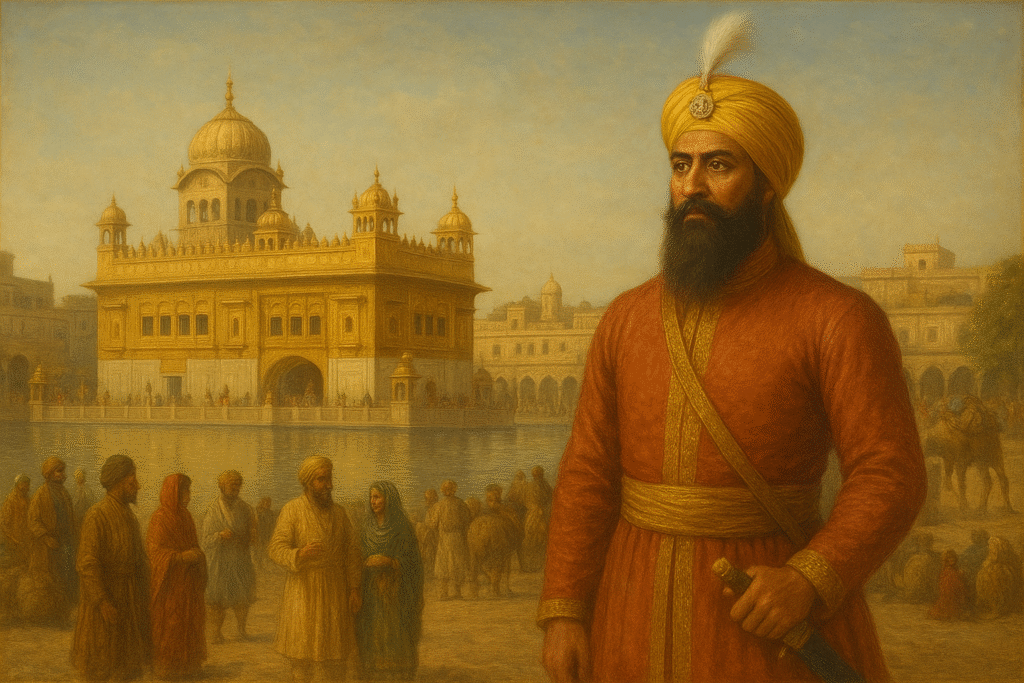Sikh Kingdom
- Mughal Decline: By the early 1700s, the Mughal Empire was weakening, and Punjab was suffering from invasions (especially from Afghan ruler Ahmad Shah Abdali/Durrani) and internal instability.
- Rise of Misls: The Sikh community, following the teachings of Guru Nanak and the ten Sikh Gurus, transformed into a military force under Guru Hargobind and Guru Gobind Singh. After Banda Singh Bahadur’s early struggles (1710–1716), Sikh warriors organized themselves into 12 Misls (confederacies), each controlling different territories.
- These Misls practiced a confederal system — loosely united but acting independently, often coming together in the Sarbat Khalsa at Amritsar to decide major issues.
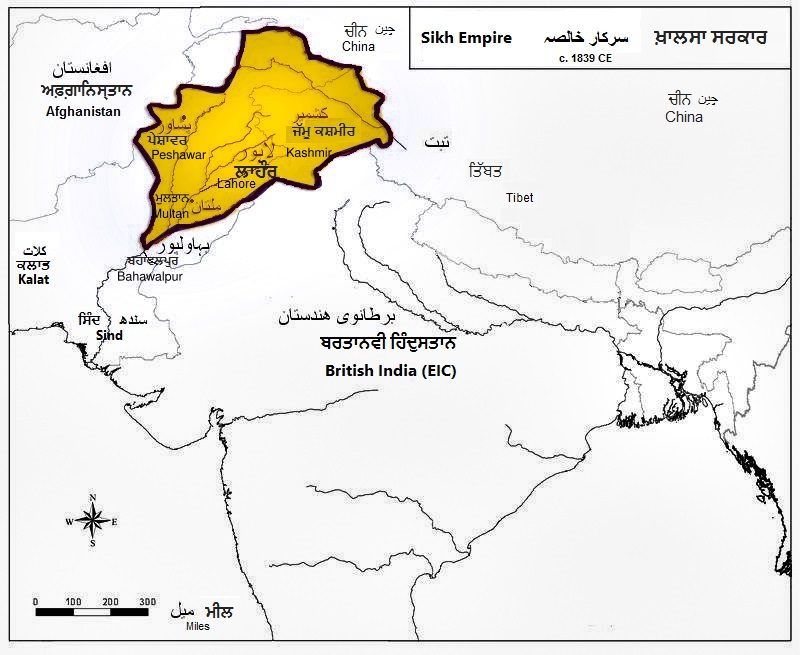
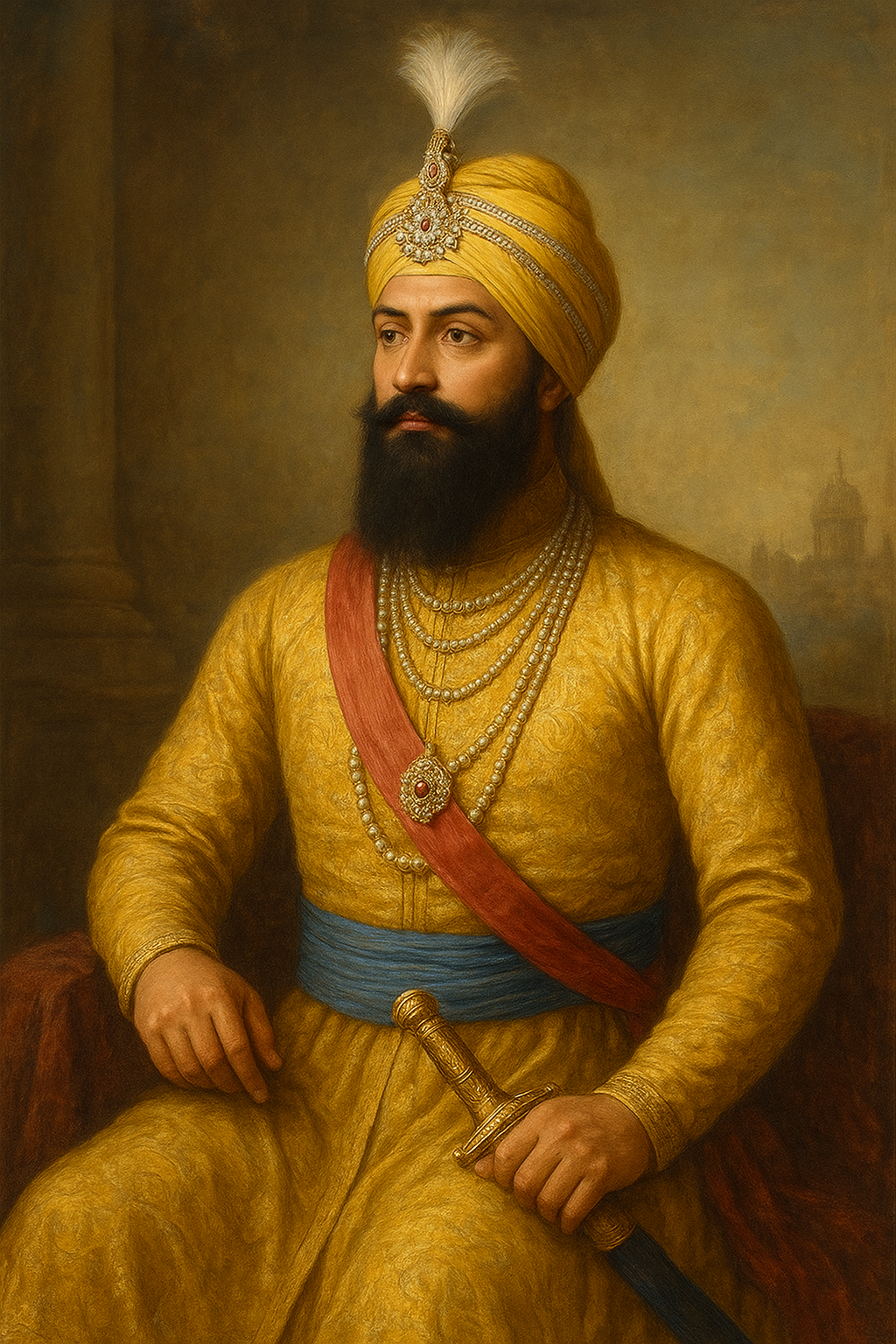
Maharaja Ranjit Singh and the Unification of Punjab
- Birth: Ranjit Singh was born in 1780 into the Sukerchakia Misl.
- Rise to Power: He became chief of the Sukerchakia Misl at just 12 years old after his father’s death.
- Unification: Through diplomacy, marriage alliances, and military campaigns, Ranjit Singh united most of the Sikh Misls by 1801.
- Proclamation as Maharaja: In 1801, he was crowned Maharaja of Punjab at Lahore, marking the formal beginning of the Sikh Empire.
- Expansion of the Sikh Empire
- Territorial Extent:
- West to Peshawar (in modern-day Pakistan)
- North to Kashmir and Ladakh
- South to Multan
- East to the banks of the Sutlej (British-controlled territory beyond that)
- Military Strength:
- Modernized army with European officers (e.g., Jean-Baptiste Ventura, Paolo Avitabile).
- Introduced modern artillery, disciplined infantry, and organized cavalry.
- Religious Policy:
- Although a devout Sikh, Ranjit Singh promoted religious tolerance, employing Hindus, Muslims, and Europeans in his court and army.
- Prohibited cow slaughter in Punjab to respect Hindu sentiments.
- Territorial Extent:
Golden Period (1801–1839)
- Lahore became a major center of art, culture, and trade.
- Ranjit Singh restored the Harmandir Sahib (Golden Temple) with marble and gold plating.
- The empire was strong enough to keep both the Afghans and the British at bay.
- Decline After Ranjit Singh’s Death
- 1839: Ranjit Singh died, leading to political instability.
- Rapid succession of rulers:
- Kharak Singh (1839–1840)
- Nau Nihal Singh (1840)
- Sher Singh (1841–1843)
- Duleep Singh (1843–1849, as a child ruler with his mother Maharani Jind Kaur as regent)
- Infighting among nobles and court intrigues weakened the empire.
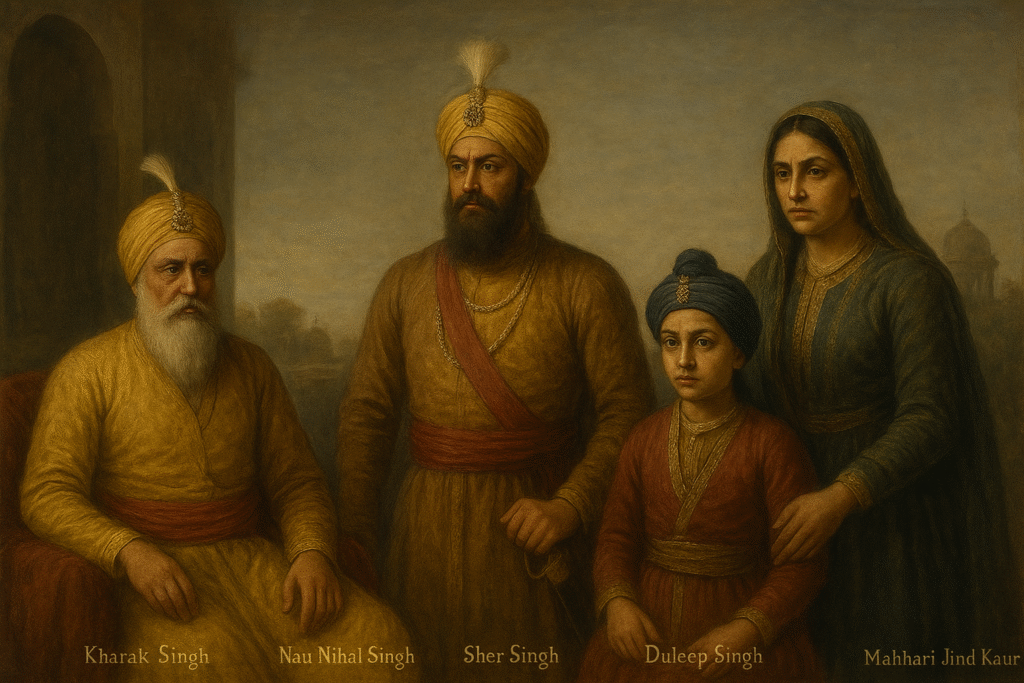
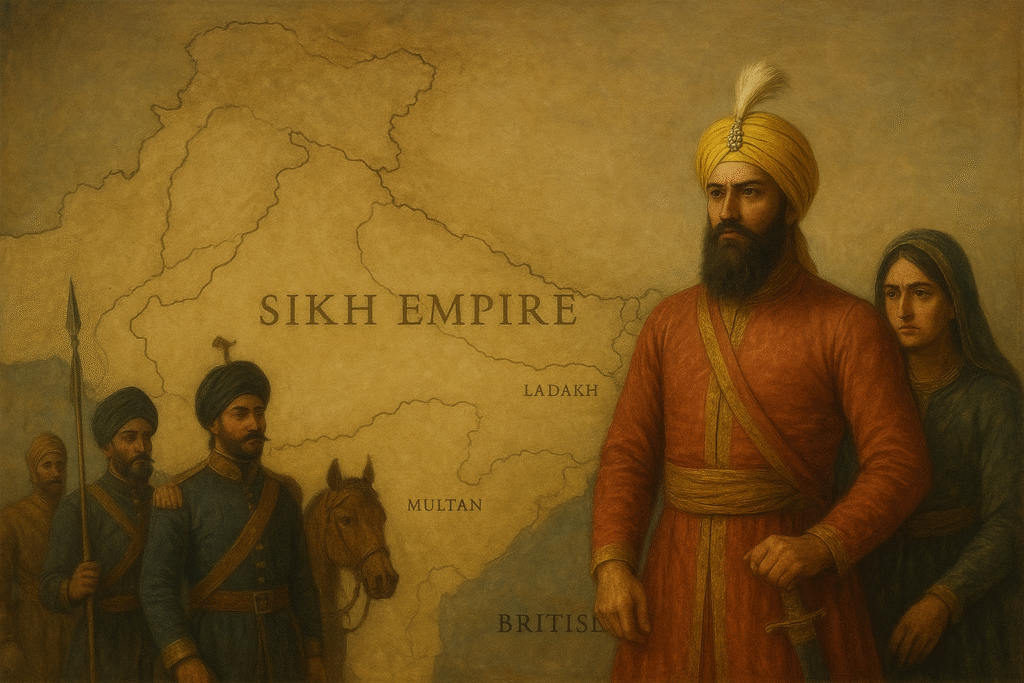
Anglo-Sikh Wars and Fall of the Kingdom
- First Anglo-Sikh War (1845–1846): British East India Company defeated the Sikhs due to internal betrayal and disunity.
- Treaty of Lahore (1846): Loss of territory and British political interference increased.
- Second Anglo-Sikh War (1848–1849): Complete defeat of Sikh forces.
- 1849: Punjab was annexed into the British Empire; young Maharaja Duleep Singh was taken to Britain.
- Legacy of the Sikh Kingdom
- First and only time in history that Punjab was unified under Sikh rule.
- Military innovations and governance under Ranjit Singh are still admired.
- Remembered for its pluralism, art, and architecture.
- Inspired later movements for independence from British colonial rule.
